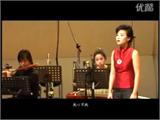What are the treatment methods for anal fistula _ Zhengzhou Anorectal Disease Hospital
Treatment of Anal Fistula
1. Internal orifice clearance: The operation for finding the internal orifice is the same as the thread hanging therapy. After detecting the internal orifice, pull the probe out of the anus. If the fistula tube is curved or has branches and the probe cannot be inserted into the internal orifice, inject a small amount of 1% Methylene Blue solution from the external orifice to determine the location of the internal orifice. Then use a grooved probe to gradually cut open the channel until the internal orifice is found.
2. Thread Hanging Therapy: This is a slow fistula cutting method that uses the mechanical action of rubber bands or medicinal threads (medicinal threads also have drug corrosion effects), causing blood circulation disorders in the ligated area, gradually pressing the tissue; at the same time, the ligation line can be used as a fistula drainage object to allow the exudate in the fistula to drain out and prevent acute infection. During the process of surface tissue cutting, the base wound surface begins to heal gradually. The biggest advantage of this gradual cutting method is that although the anal sphincter muscle is cut, it will not change position due to excessive contraction of the sphincter muscle, and generally will not cause anal incontinence. This method is suitable for simple straight fistulas with internal and external orifices within 3-5 cm of the anus, whether they are low or high positions, or as an auxiliary method for complex anal fistula incision or resection.
Method:
(1) Lateral position: First tie a rubber band on the tail end of the probe, then gently insert the probe head into the fistula tube from the external orifice towards the inside, find the internal orifice near the dentate line of the anal canal; then insert the index finger into the anal canal to feel the probe head, bend the probe head and pull it out from the anal opening. Note that when inserting the probe, violent force should not be used to prevent the creation of false channels.
(2) Pull the probe head completely out of the internal orifice of the fistula so that the rubber band passes through the external orifice of the fistula and enters the fistula.
(3) Lift the rubber band, cut the skin layer between the internal and external orifices of the fistula, tighten the rubber band tightly against the subcutaneous tissue, clamp it with a hemostatic clamp; below the hemostatic clamp, tighten the rubber band with coarse silk thread and make double ligation, then release the hemostatic clamp and cover the incision with petroleum jelly gauze. After surgery, sit in a bath of warm 1:5000 potassium permanganate solution daily and change the dressing. Generally, about 10 days after surgery, the anal fistula tissue will be cut by the rubber band, and the wound will heal in 2-3 weeks.
Advantages of this method:
(1) Simple surgery, fast operation, less bleeding.
(2) When the rubber band does not fall off, the skin incision generally will not develop "bridging".
(3) Convenient medication change.
Key points to maintain the success of the thread hanging:
(1) Accurately find the internal orifice. Generally, when the probe passes through the internal orifice, if there is no bleeding, it proves that the position of the internal orifice is mostly correct.
(2) The wound must start healing from the base, making the inner wound of the anal canal heal first, preventing early adhesion and closure of the surface skin. Generally, the rubber band can fall off in 7-10 days. If it does not fall off after 10 days, it indicates that the silk thread used to ligate the rubber band is loose and needs to be tightened again.
After the fistula is cut open, the granulation tissue on its posterior wall can be scraped off with a curette. Generally, it does not need to be excised to reduce bleeding and avoid damaging the sphincter muscle on the posterior wall. The excised fistula tissue should be sent for pathological examination.
The Department of Colorectal Surgery of Huashan Hospital in Zhengzhou is committed to creating a first-class specialty, improving the diagnosis and treatment level of anal diseases, and reducing patient suffering. Since 2004, our hospital has introduced advanced technologies such as the American DNR plasma minimally invasive technology and the endoscopic video system for the anus. In the treatment of anal fistulas, we not only avoid various disadvantages brought by traditional surgical operations but also achieve curative purposes for complex high-position anal fistulas. This new type of minimally invasive treatment technology has obvious advantages over traditional surgical operations and laser cauterization. Its features include short treatment time, less pain, no damage to normal skin tissue, high safety, no need for hospitalization, and no impact on learning and work. It has successfully resolved disease problems for more than ten thousand patients with common and complex anal fistulas in Henan region, receiving widespread praise from patients.



